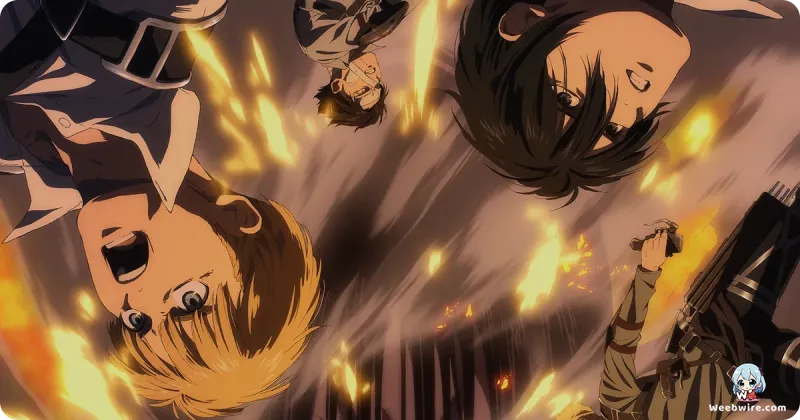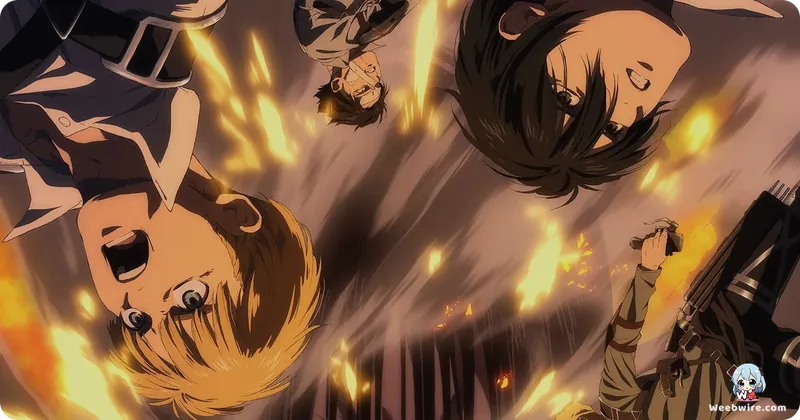Unveiling the Hidden Depths: The Untold Stories Behind Attack on Titan's Epic Conclusion

The globally acclaimed saga of Attack on Titan has reached its climactic zenith with the release of Attack on Titan Final Season THE FINAL CHAPTERS Special 2. While fans have been gripped by Eren Yeager's tumultuous journey and humanity's desperate struggle against the colossal Titans, the series is brimming with fascinating, often overlooked details that illuminate the profound artistry behind Hajime Isayama's masterwork. These hidden depths offer a richer appreciation for the narrative's intricate design and its enduring legacy, sparking renewed fan anticipation and discussion.
The Genesis of Terror
Remarkably, the very genesis of the terrifying Titans sprung from an unexpected real-life encounter. Isayama once recounted a disturbing incident at an internet café involving a belligerent, incommunicable customer. This unsettling experience, coupled with the individual's physical demeanor, directly inspired the Titans' grotesque, unfeeling visages and their seemingly irrational, destructive behavior. This pivotal anecdote underscores how deeply personal fears can manifest into the most fantastical and horrifying elements of storytelling.
Subverting Shonen Tropes
Beyond this initial spark, Isayama intentionally subverted traditional shonen tropes. Early in development, he deliberately crafted Eren Yeager not as an archetypal overpowered hero, but as a protagonist driven by raw, often irrational emotion, initially grappling with helplessness. This conscious choice allowed for a deeper exploration of trauma, moral ambiguity, and the crushing weight of freedom, defining Eren’s complex evolution from a vengeful boy to a figure burdened by unimaginable choices.
Linguistic Layers and Symbolism
Attack on Titan's meticulously crafted world is further enriched by subtle linguistic choices. Many character names, including Eren, Mikasa, Armin, and Levi, carry significant Germanic or biblical origins, adding layers of subtext. For instance, 'Eren' (Turkish for 'saint' or 'holy person') paired with 'Yeager' (German for 'hunter') perfectly encapsulates his dual role. Similarly, Mikasa's name, reportedly inspired by a Japanese battleship, symbolizes her unwavering strength and protective nature, inviting fans to delve into the narrative’s profound lore.
Symbolism abounds, with recurring motifs like birds representing the elusive freedom Eren and his comrades relentlessly pursue, contrasting sharply with their 'caged' existence within the Walls. The Walls themselves, while defensive, also symbolize profound psychological and societal barriers. These visual metaphors deepen the series' philosophical inquiries into liberty, sacrifice, and the cyclical nature of conflict.
MAPPA's Dedication to the Finale
The animation powerhouse MAPPA, tasked with concluding the series after inheriting it from WIT Studio, faced immense pressure. Their dedication to preserving the manga's raw intensity and emotional depth is undeniable, demonstrated through innovative CGI for the colossal Wall Titans and the fluid, dynamic combat sequences of the Survey Corps. MAPPA's efforts pushed animation boundaries, delivering a spectacle that cemented the series' visual prowess.

A Challenging Conclusion
The conclusion in THE FINAL CHAPTERS Special 2 ignited widespread debate, a reaction Isayama himself anticipated. His aim was to challenge viewers, prioritizing artistic integrity over universal satisfaction. This commitment solidified Attack on Titan's status beyond a mere action series, transforming it into a profound exploration of war, prejudice, and humanity's inherent flaws. The enduring discussions surrounding Eren's final actions ensure the series' legacy as a complex narrative that continues to provoke deep thought and re-evaluation among its passionate fanbase.
Credits
Attack on Titan Final Season THE FINAL CHAPTERS Special 2
Author
Hajime Isayama
Cover Art
Hajime Isayama
Studio
MAPPA
Publisher
Kodansha
Producers





